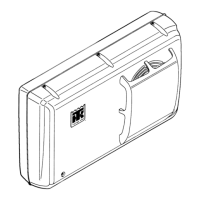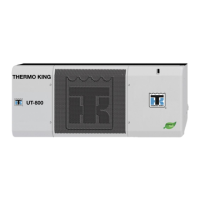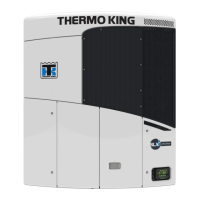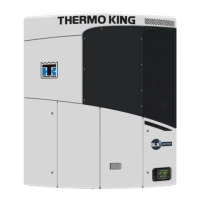Refrigeration Maintenance and Service Operations
140
3. Confirm that the evacuation station functions
properly and determine “Blank Off” pressure.
The “Blank Off” pressure of the vacuum
pump is the deepest vacuum that the vacuum
pump can attain when isolated from the rest of
the system. If a vacuum pump (isolated from a
system) is started and the micron meter
responds quickly by going to a deep vacuum,
the operator can be confident that the pump
and oil are in good condition. If the vacuum
pump fails to reach a deep vacuum within 5
minutes, the operator should suspect the
condition of the oil or the pump. It is
recommended that the pump oil be changed
first to see if the rate of reaching a deep
vacuum is improved.
4. Connect the evacuation station and refrigerant
tank with gauge manifold (optional) to the
unit as indicated in figure “Evacuation Station
and Unit Hook-up” on page 141. Connect
evacuation hoses to the compressor suction
and discharge service fittings.
5. Open Evacuation Station valves (V1, V3, and
V4). It is only necessary to open valve V2
when a reading on the micron meter is desired.
This is especially true when starting to
evacuate a unit and large amounts of moisture
and oil will be passing by the sensor.
6. Open the vacuum pump Iso-Valve™ built into
the pump housing below the handle. It is
recommended that the valve be kept open at
all times.
7. If connecting a refrigerant tank and gauge
manifold to the evacuation station, close the
gauge manifold and refrigerant tank valves to
prevent refrigerant from being drawn from the
tank.
Unit Evacuation
1. Turn on the vacuum pump. Open the gas
ballast valve located on top of the pump
housing behind the handle (the valve is fully
open at two turns counterclockwise). Evacuate
the system to 500 microns to achieve a final
equilibrium pressure of 2000 microns or less.
The final equilibrium pressure is determined
with the Thermo King Evacuation Station
using the following procedure (called a
pressure rise test):
a. Evacuate the system using the evacuation
station until the vacuum level reaches
1000 microns. Then close the gas ballast
valve.
b. Continue evacuation to 500 microns or
until vacuum stabilizes at its lowest level.
Contamination may delay reaching the
lowest level for a period of several or
more hours.
c. Close valve V1 to isolate the vacuum
pump from the system.
d. Observe the vacuum level on the micron
meter.
When the meter has stabilized, the value indicated
on the micron meter is the equilibrium pressure.
This reading must be 2000 microns or less.
NOTE: The presence of refrigerant in the
compressor oil may prevent a low vacuum
reading from being achieved. Compressor oil
can continue to outgas for long periods of time.
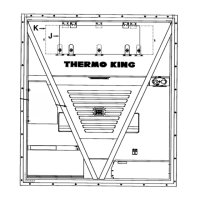
